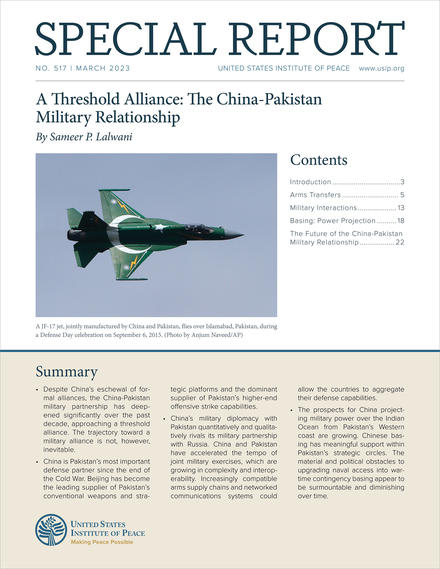Sameer P. Lalwani

Geopolitical shifts in South Asia over the past decade, driven by sharper US-China competition, a precipitous decline in China-India relations, and the 2021 withdrawal of US forces from Afghanistan, have pushed the Chinese and Pakistani militaries closer together. The countries’ armies and navies are increasingly sharing equipment, engaging in more sophisticated joint exercises, and interacting more closely through staff and officer exchanges. Yet, as this report concludes, a full China-Pakistan alliance is not inevitable, as Chinese missteps and other sources of friction could slow its consummation.
SummaryDespite China’s eschewal of formal alliances, the China-Pakistan military partnership has deepened significantly over the past decade, approaching a threshold alliance. The trajectory toward a military alliance is not, however, inevitable.
China is Pakistan’s most important defense partner since the end of the Cold War. Beijing has become the leading supplier of Pakistan’s conventional weapons and strategic platforms and the dominant supplier of Pakistan’s higher-end offensive strike capabilities.
China’s military diplomacy with Pakistan quantitatively and qualitatively rivals its military partnership with Russia. China and Pakistan have accelerated the tempo of joint military exercises, which are growing in complexity and interoperability. Increasingly compatible arms supply chains and networked communications systems could allow the countries to aggregate their defense capabilities.
The prospects for China projecting military power over the Indian Ocean from Pakistan’s Western coast are growing. Chinese basing has meaningful support within Pakistan’s strategic circles. The material and political obstacles to upgrading naval access into wartime contingency basing appear to be surmountable and diminishing over time.
No comments:
Post a Comment